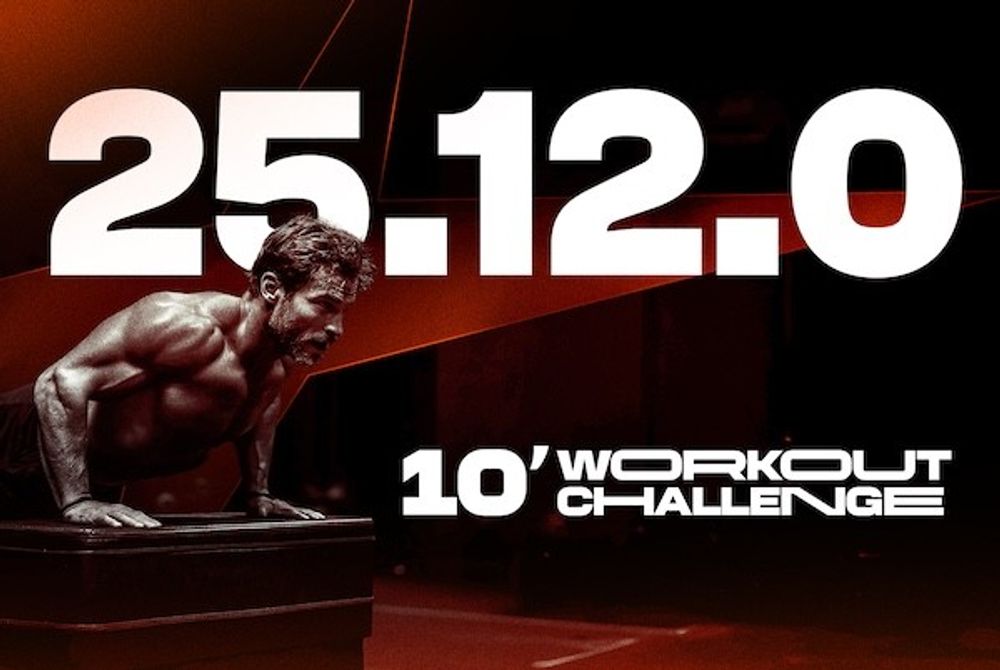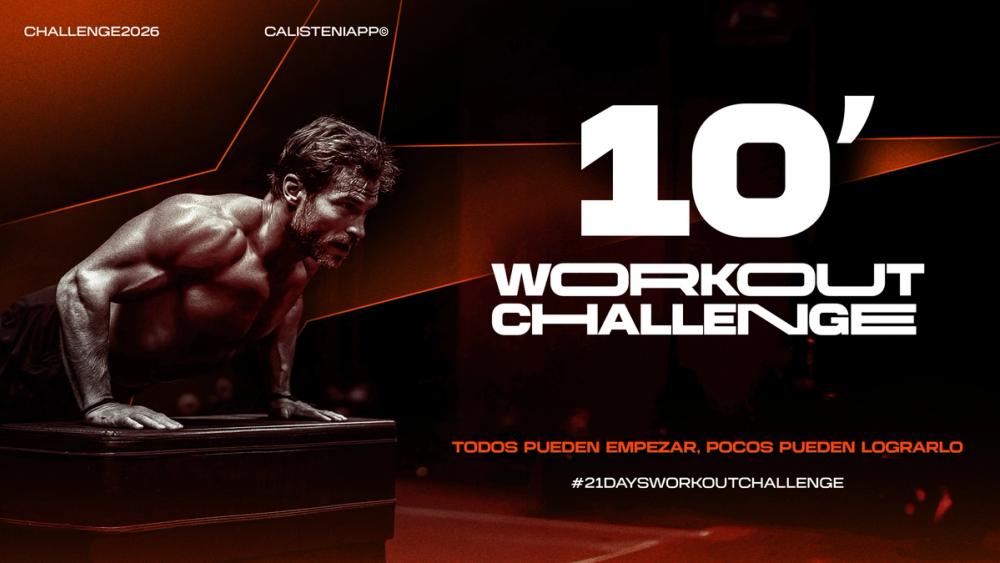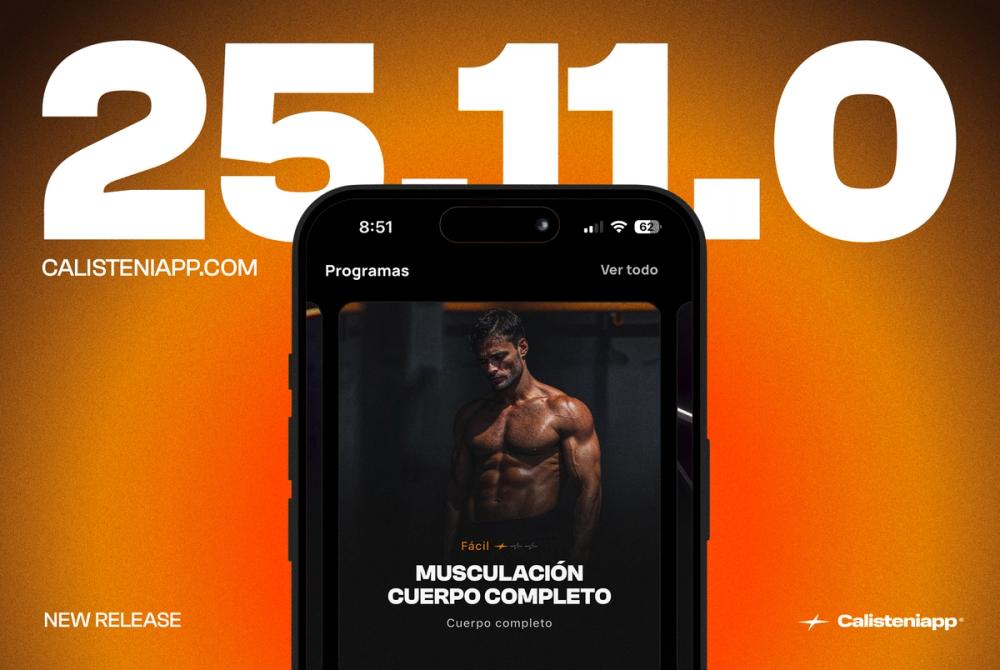
Release 25.12.0
Calisteniapp v25.12.0 introduces program pause, performance improvements, and the 10’ Workout Challenge 2026. No shortcuts, just better tools

Calisthenics is a relatively recent sport modality, some of the exercises that compose it have been used to train for thousands of years, but what is known today as Calisthenics, as a sport itself, has been forged in the last few decades.
In this article we are going to review the modern history of Calisthenics and see how and where this movement emerged.
When we say "History of Calisthenics" we mean the internet sensation that made bodyweight exercises as popular as they are today. And that resulted in the birth of the term Street Workout, which today is synonymous with Calisthenics (more information on definitions and terms in this article).
Before we start, we will divide the history of Calisthenics and Street Workout into 4 different periods:
-The pre-Youtube era
-The golden age
-The era of the identity crisis
-Current era
Each period has its own organizations and characteristics.
Pre-youtube era
Believe it or not, there were Calisthenics equipment before the invention of Youtube. At that time it was basically basic training to improve physical appearance. People didn't care much about planche or front levers. Any advanced move you got, it was just an extra that came from basic training.

The first Calisthenics team in history was founded in 2002 and was called "Ruff Ryders", they didn't last long but their message was clear, you can train on the street for free and get a great physique.

How do we know they were created in 2002? They say so on their DVD. It's called "Thug Workout, Fitness from the Street" and if you search you can find it on Amazon, where it says it was released in November 2002. So if anyone thought that Street Workout was invented in Russia, I'm sorry to say that this movement started in United States, by Americans.
This is the first Calisthenics video that promoted going out in your neighborhood and using bodyweight exercises to improve your fitness. This is a video worth watching if you are a beginner, or someone interested in the history of Street Workout. You will be able to see all the basic exercises, such as dips, push-ups, pull-ups, as well as the mythical face-down sit-ups.
They were also the first to do many of the things that later became very popular in the calisthenics community.
The featured athletes on the DVD are Iborn and Big G.
Big G, as the name suggests, is really big, it's huge. And all doing basics, dips, pull-ups, push-ups and hanging crunches. He is basically the original "beast", before "Beast" came along.

There is another team that existed in the pre-Youtube era, which was even more influential. They are known as Bartendaz, they were probably the second Calisthenics team to be created, specifically in 2003. Their leader is GIANT, which stands for "Growing Is A Nobel Thing". It was originally going to be on the Ruff Ryders DVD, but for some reason it didn't appear on it, so he created his own team and they started making their own videos.

GIANT by Bartendaz
The Bartendaz had a great influence on the rest of the teams that appeared later. Just by looking at the name you can tell, if you look at the name of other known Street Workout teams: BarStarz, BarBarians, Bar Brothers... just with that you can already see the influence they had, and if that was not enough , they were the first team to appear on television and promote our sport in front of millions of people.
To make matters more interesting, both Hannibal for King and Beast were part of Bartendaz, before becoming famous on YouTube.
In terms of performance on the bars, we can say that they popularized the first dynamic movements, precursors of what we see today in freestyle competitions. But what makes them special is not their strength or technique on the bars. It's the impact they had on people's lives. His most famous catchphrase is "make sure you surround yourself with the right bars, so you don't end up behind the wrong bars." Bartendaz managed to turn people with criminal pasts into productive members of society. And that's what makes them one of the best Calisthenics teams ever.
And with this we close the pre-youtube era. Ruff Ryders taught us all the basics, while Bartendaz added the dynamic movements and social aspect of Calisthenics.
There were other teams like Bar Masters, but Ruff Ryders and Bartendaz had the most impact.
With the invention of Youtube, in 2005, people started uploading their Street Workout trainings. Over the years the visits began to rise and it became something really popular. Millions of people from all over the world began to take to the streets and train for free.
The video that marked a before and after was the one called "Barilla and Hannibal" in 2008. We don't know what happened to Barilla because he never made another video, but we all know who Hannibal is.
If it weren't for Youtube, I highly doubt there would have been a golden age of Calisthenics. This heyday began around 2009 and lasted until around 2012. During this period the most influential people were Hannibal for King and Dennis Minnin, with Hannibal clearly being the more popular of the two. In fact, for a time Dennis Minnin was known as "the white Hannibal".

Hannibal for king is for Calisthenics what Michael Jordan is for basketball. Even with his full planche banana, he will always be the icon of Calisthenics, since he is the one who has had the greatest impact, popularizing this sport. There were other athletes like Hit Richards, who also motivated many and was the handstand boy in Calisthenics.

As for the Calisthenics teams, the most important were Barstarzz, Beast Mode and Barbarians. The Barbarians were very technical, had amazing performance, were strong and had huge stamina and always used strict form in exercises. Its best-known member is Zef Zakavelli, a true legend of our movement, being one of the first to show excellence in front lever, front lever pull ups, one-arm pull-ups and muscle ups.
The Beast Mode motivated a lot of people too, they were the first heavyweight team and their most famous members are Beast and Juice. During this time, the Barstarzz were still active and dedicated themselves more to the topic of social networks, spreading the values of Calisthenics around the world with a lot of positivity and camaraderie.
During the golden age, the first Calisthenics world championship took place in 2011, in which Ether won. In 2012 it was won by Eugeny Kocherha, and he was the last person to win this championship in the Freestyle category without any kind of dynamic movement.
After having reviewed the pre-youtube era and the golden age, we come to the third era, which we will call the era of the identity crisis.
During the golden age, it was very clear what Calisthenics and Street Workout was, anyone who trained on the street, with bodyweight exercises was part of the community, it didn't matter what they focused on or what their level was.
Later a small division was generated, on the one hand we had a part of people that focused on static exercises with correct form (locked elbows, no bananas etc.), dynamic exercises and competitions.
And then we had another group of people who were more focused on the basics, not as concerned with the static, and also more focused on the physical aspect.
There are also people who did both without any problem. Looking to have a good physique, but also to compete and demonstrate his strength and his correct technique.
The problem is not that people had different goals, the problem is that those on one side criticized the other, instead of letting each one do what they like. There was a lot of drama with videos criticizing other people's training. Those who trained more basic type saying that those who compete are short pseudo-gymnasts. Those who compete angry because they are not as popular as those who focus only on physique, even though they are stronger than them, etc.
It also happened that people on each side tried to narrow down what was and was not calisthenics and there was a certain hostility towards those on the other side. It was common to see statements on social networks of the type "this is not calisthenics".
But over time the waters calmed down and we moved on to the next stage.
From the pandemic onwards we have a new stage in Calisthenics in which the different modalities are already defined and separated and there is no such struggle to decide what calisthenics really is. It is understood that there is a modality of freestyle, tension or power moves, weighted calisthenics (Street Lifting), endurance, people who train only basics to be fit, etc. And each one has its different competitions, associations, references and values.
It seems that there is a general growth of Calisthenics as a sport in its different modalities and after the stoppage due to the pandemic we are beginning to have a large number of events and competitions of all kinds, both regionally, nationally and internationally.
And we come to the end, as you can see we have focused more on the first two periods, because they are the most important. There are many people who think that Hannibal was the one who created the Street Workout, or that it was created in Russia, and not so many people know who the Ruff Ryders or the Bartendaz were, so I hope I have clarified these questions in this article.
References:
- History of Street Workout by George Workout https://www.youtube.com/watch?v=IwhgaV5_8oY
- La Calle es tu Gimnasio https://www.amazon.es/calle-gimnasio-completa-calistenia-workout-ebook/dp/B083TSS2LQ

Yerai Alonso
Cofundador de Calisteniapp, referente en calistenia y el street workout en Español. Con más de una década de experiencia, es creador de uno de los canales de YouTube más influyentes del sector. Autor del libro La calle es tu gimnasio, campeón de Canarias y jurado en competiciones nacionales e internacionales.
Join our newsletter
Learn everything you need to know about calisthenics

Calisteniapp v25.12.0 introduces program pause, performance improvements, and the 10’ Workout Challenge 2026. No shortcuts, just better tools

Start training or give your routines a boost with this 21-day Calisthenics challenge for all levels that will put your discipline to the test.

Calisteniapp is a symbol that represents our obsession with excellence, our essence, and the path we want to define for the next ten years.
